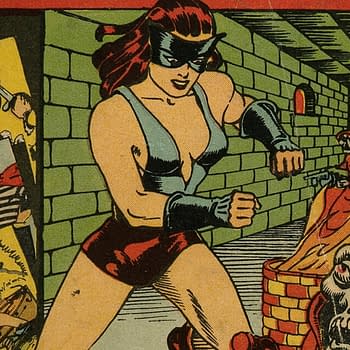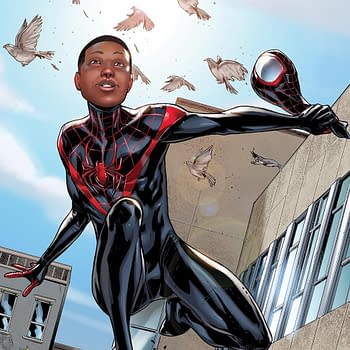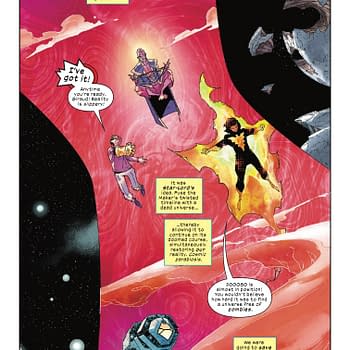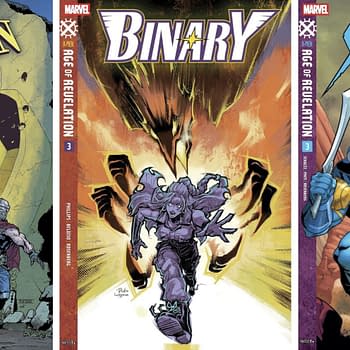Posted in: Comics, Recent Updates | Tagged: Andrew Aydin, civil rights, congressman john lewis, entertainment, graphic novels, March: Book Two, Nate Powell, nonfiction comics
Rep. John Lewis, Andrew Aydin And Nate Powell March On
By Cameron Hatheway

Just when you thought it couldn't get any worse, things accelerate rapidly in March: Book Two, as if someone threw gasoline on the fire of racial tensions in America. The sit-ins have evolved from diners to fast food restaurants, and "stand-ins" were the next step at local segregated movie theaters, but with much more violent results. Lewis and company stand strong, but their already battered bodies pay a painful price.
One of the main events in Book Two revolves around the Freedom Riders and their perilous journeys into dangerous southern states. Despite doing their homework about what laws would and would not protect them, it was obvious that law enforcement had no problem turning a blind-eye when it came towards violent altercations between residents against the Riders. One bus never even made it to Birmingham, Alabama, as police gave the local KKK chapter 15 minutes of playtime firebombing the bus and attacking the Riders before arriving on the scene. Despite constantly being beaten, fined, and jailed, Lewis and the Riders prevailed against all odds and stayed the course.

I remember feelings of shock and disgust when first reading Book One, but halfway through Book Two and I was feeling anger and a sickening feeling deep in my gut. This time around things were more intense, more shocking. I knew these events happened; we all learned about the watered-down PG version in our high school history classes. But it's a different feeling when the events are being retold by someone who was actually there those many decades ago, describing the stuff of nightmares that was once deemed ordinary by society. Powell's powerful illustrations help bring that sense of helpless to life, with a glimmer of hope shinning weakly through off in the distance. We know how this story ends, but we just don't realize at what cost.
Lewis and Aydin do a remarkable job as guides on this journey throughout history, helping the reader easily transition between the past and the present. Like in Book One, the framing narrative of President-Elect Barack Obama's inauguration in 2009 continues to be the backdrop of the events that Lewis has lived through, slowly arriving at the result of decades of fighting for Civil Rights: the first African-American president.

March: Book One and Book Two should be staples in every high school library and history classroom. Students need to know the darker parts of American history, for it's never as peachy-keen and patriotic as advertised. To quote the punk band the Descendents, "I'm proud and ashamed / Every Fourth of July / You got to know the truth / Before you say that you got pride!"
March: Book Two takes place between 1961-1963, leaving Book Three to cover the upcoming events of the Selma to Montgomery voting right marches and beyond. For those who saw the movie Selma this past Christmas break and want to know more, the March books would make for great companion pieces. It's a powerful read, engrossing the reader in the pages of history for 192 pages. Be prepared to run the emotional gauntlet several times over while reading in one sitting or more, for once it sinks its teeth into you there's no turning back.
Now to march onwards to the final book, Book Three, to be released sometime later this year.
March: Book Two (Top Shelf Productions)
Written by Congressman John Lewis & Andrew Aydin
Illustrated by Nate Powell
192 Pages, B&W
$19.95
Release Date: January 20, 2015
Cameron Hatheway is a reviewer and the host of Cammy's Comic Corner, an audio podcast. You can march right on over to his Twitter @CamComicCorner.















